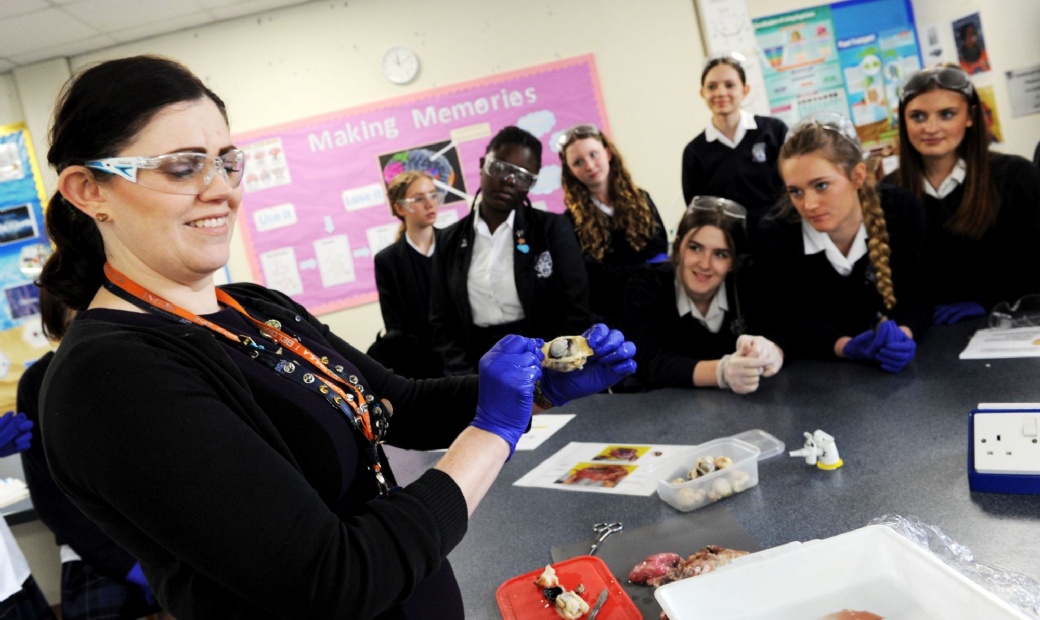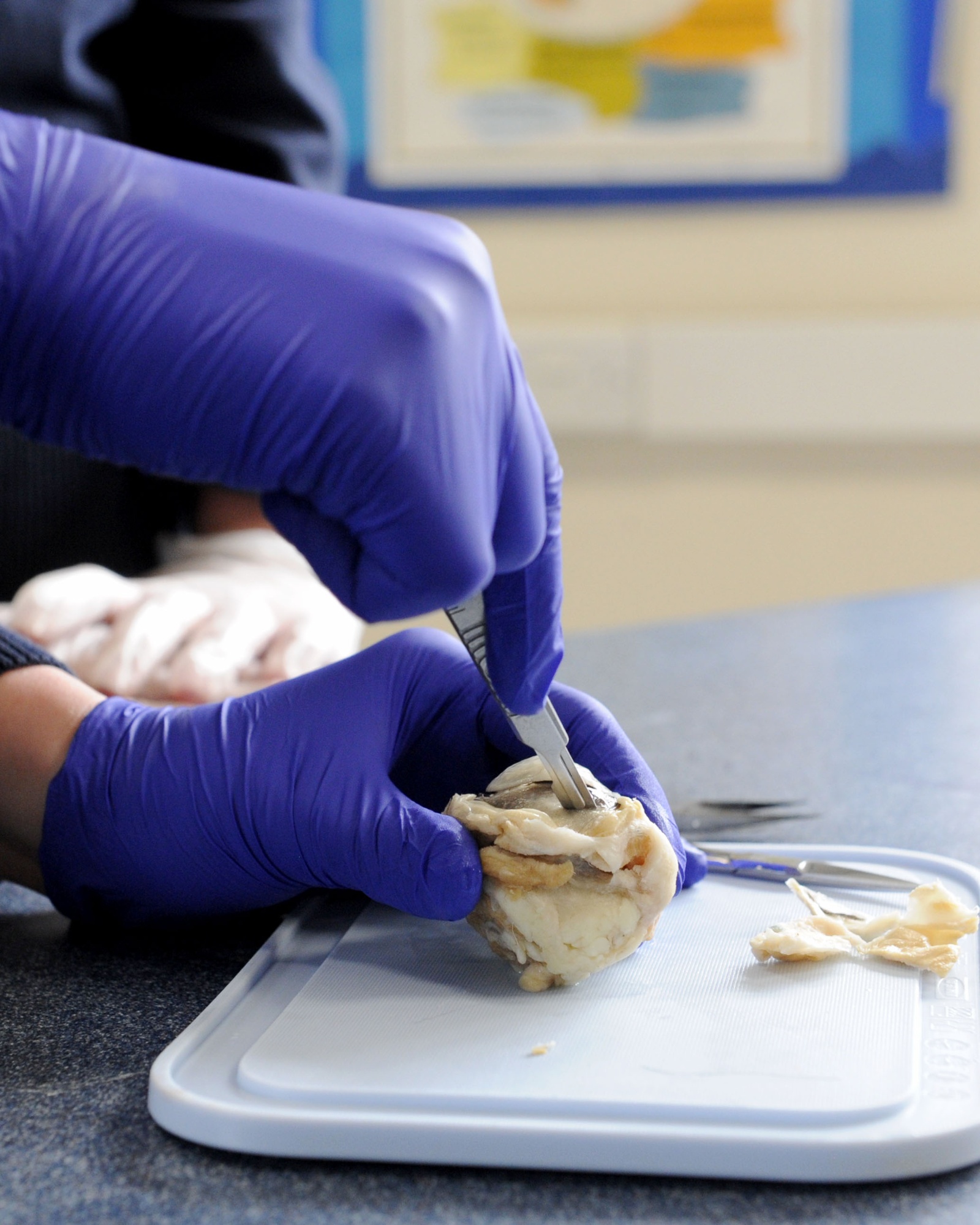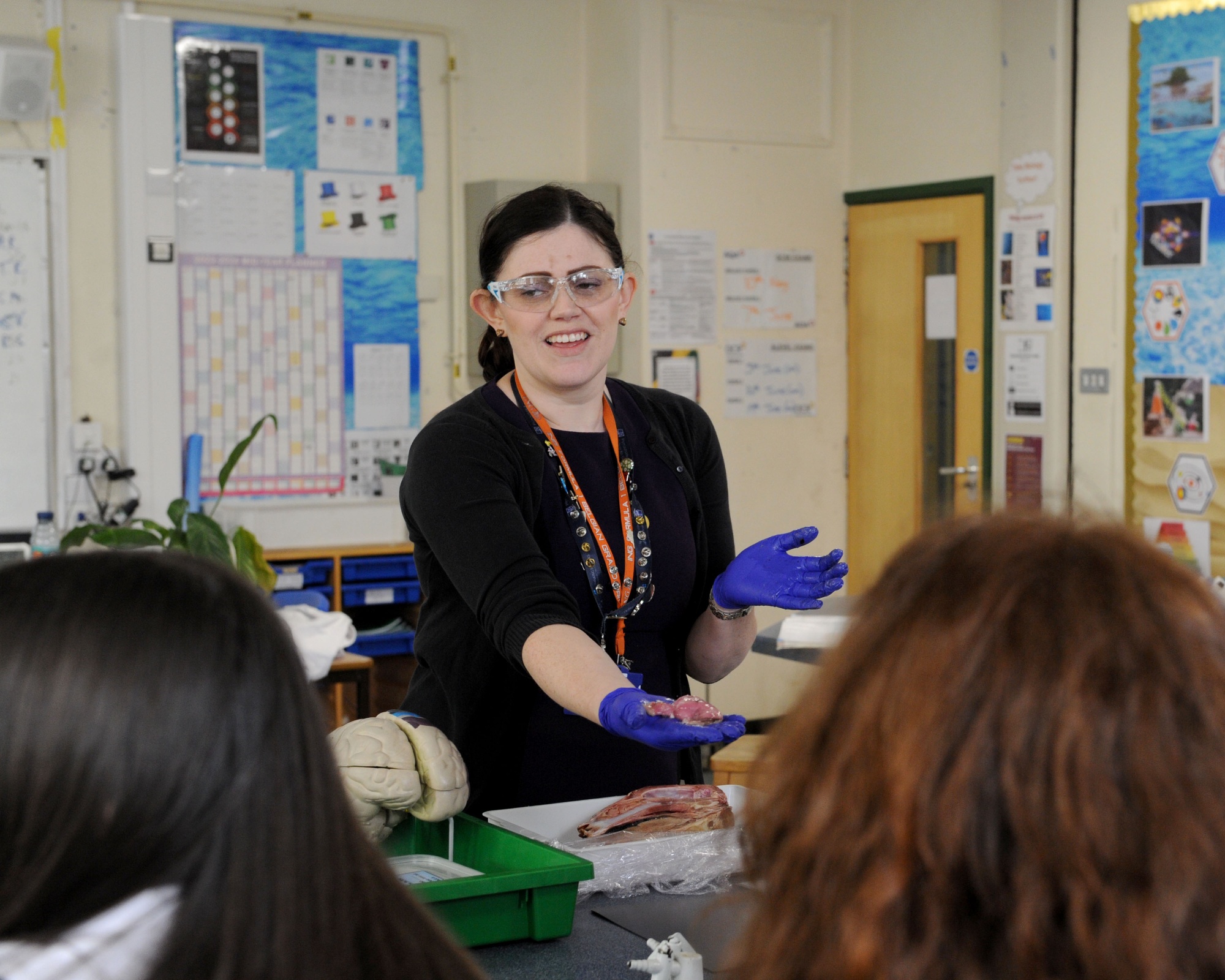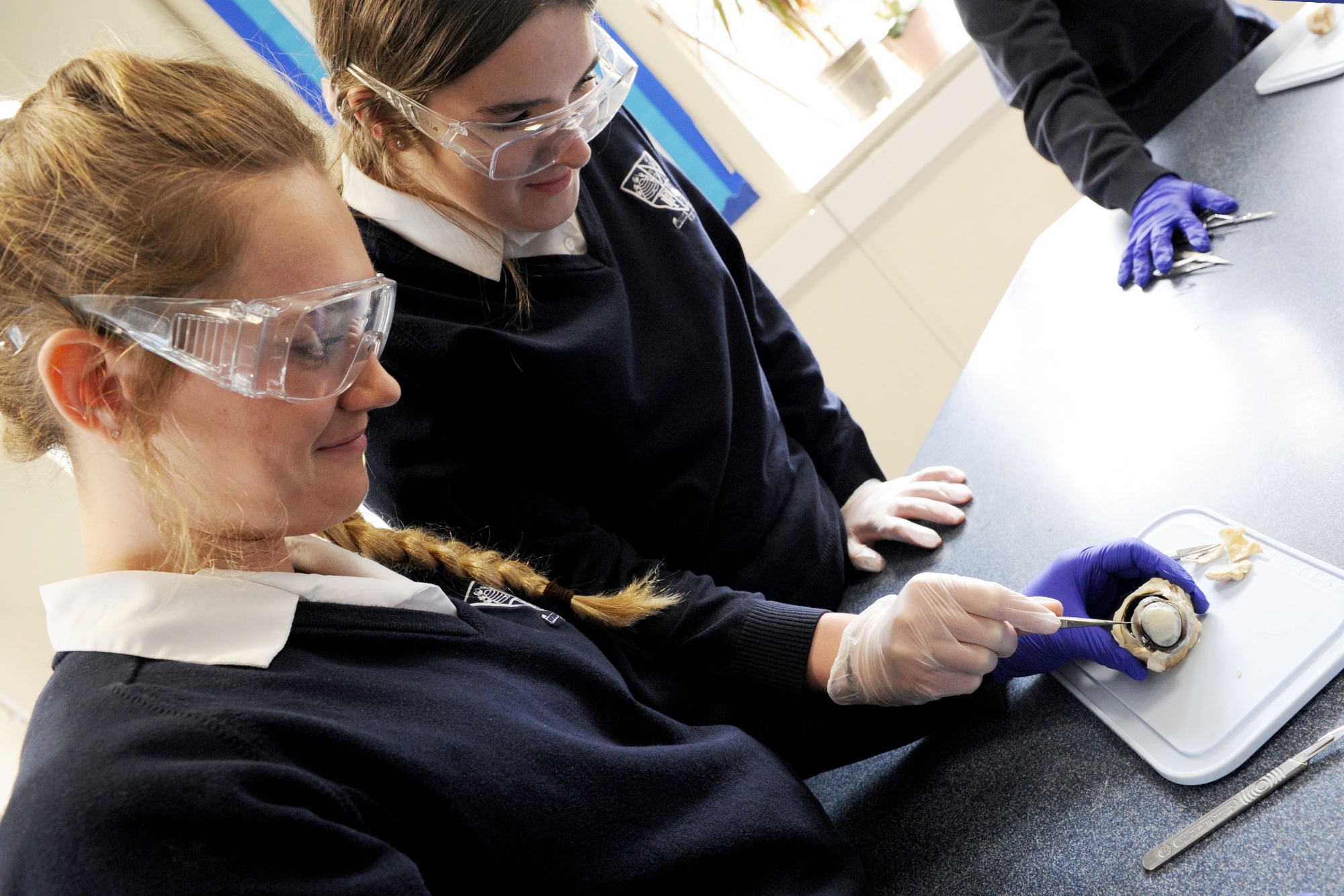Exploring the complexity of vision: GCSE students dive into eye dissection

Biology classes often offer students the opportunity to delve into the intricate details of the natural world, from the microscopic workings of cells to the complex systems of the human body. Recently, our Year 10 GCSE Biology students embarked on an immersive lesson focusing on the anatomy and function of the human eye. This hands-on experience culminated in a dissection, allowing students to apply their theoretical knowledge in a practical setting. Please note, this article contains graphical images.
The lesson began with an introduction to the structure of the eye, guided by the teacher's expertise and supported by engaging visual aids. Students learnt about the various components of the eye, including the cornea, iris, lens, retina, and optic nerve. Through interactive demonstrations and discussions, they gained insight into how each part contributes to the process of vision.
As the lesson progressed, students explored the mechanisms behind sight, from the refraction of light by the cornea and lens to the conversion of light into electrical signals by photoreceptor cells in the retina.
However, the pinnacle of the lesson was the hands-on experience of dissecting a real sheep eye. With gloves on and scalpels in hand, students eagerly gathered around their workstations, ready to put their knowledge into practice. Under the guidance of their teacher, they carefully observed and identified each component of the eye, from the tough outer sclera to the delicate inner structures.
As they dissected the eye, students were able to witness first hand the intricate organisation of tissues and structures that they had previously studied in diagrams and textbooks. They observed the transparent cornea, the colorful iris with its distinctive pupil, and the crystalline lens suspended by ligaments.
Throughout the dissection, the teacher encouraged students to ask questions, fostering a dynamic atmosphere of enquiry and discovery. Students eagerly exchanged observations and insights, deepening their understanding of the eye's anatomy and function. For many, the dissection provided a memorable and transformative learning experience, solidifying their understanding of the concepts covered in class.
Students were treated further in the lesson by exploring the cross section of a sheep skull. They could clearly see the placement of the eye and the placement of muscle and tissue connected to it. The sheep's brain was carefully dissected by the teacher, Dr Doddrell, where students could then feel its texture and compare its size in relation to the sheep's head.
Beyond the acquisition of scientific knowledge, the lesson offered students valuable lessons in teamwork, precision, and respect for living organisms. Working together, they navigated the intricacies of the dissection process, ensuring careful handling and disposal of biological materials. They also gained a newfound appreciation for the complexity and beauty of the natural world, recognising the importance of ethical considerations in scientific enquiry.



